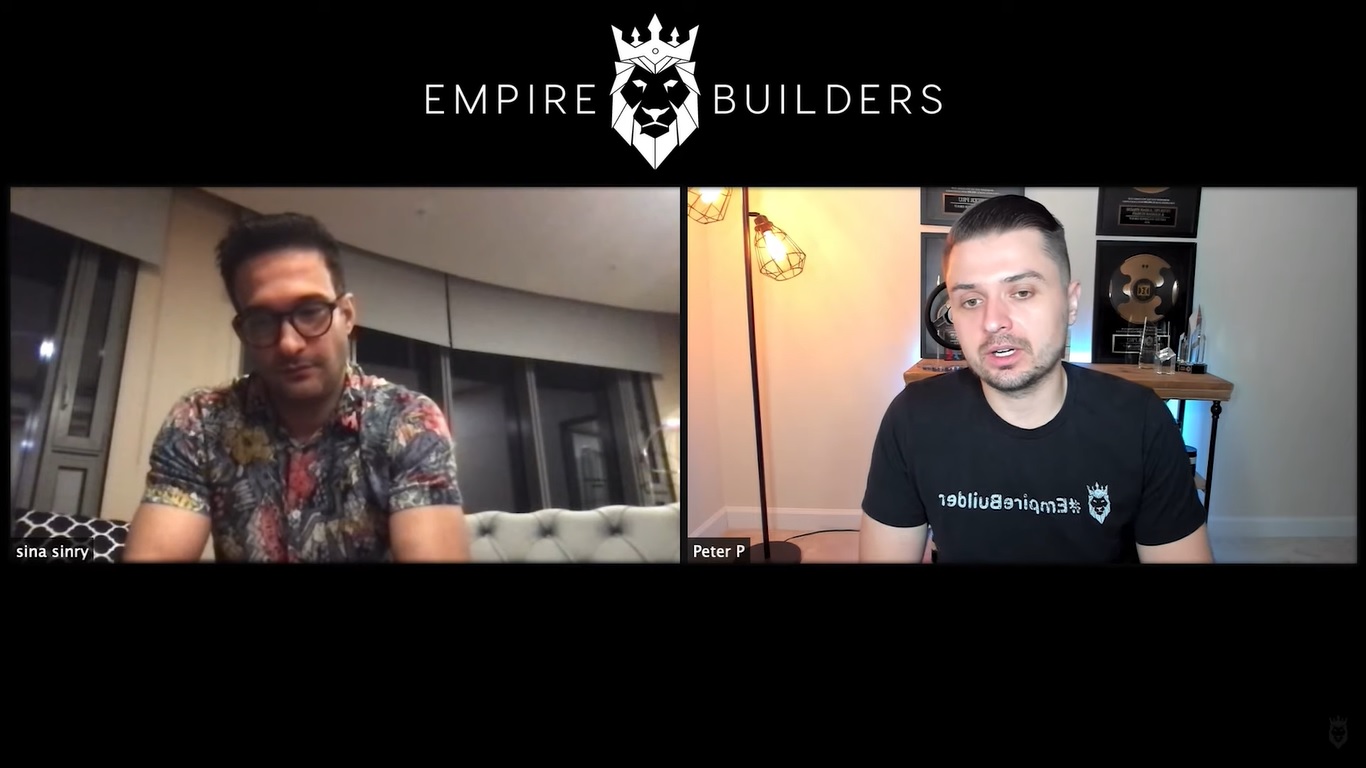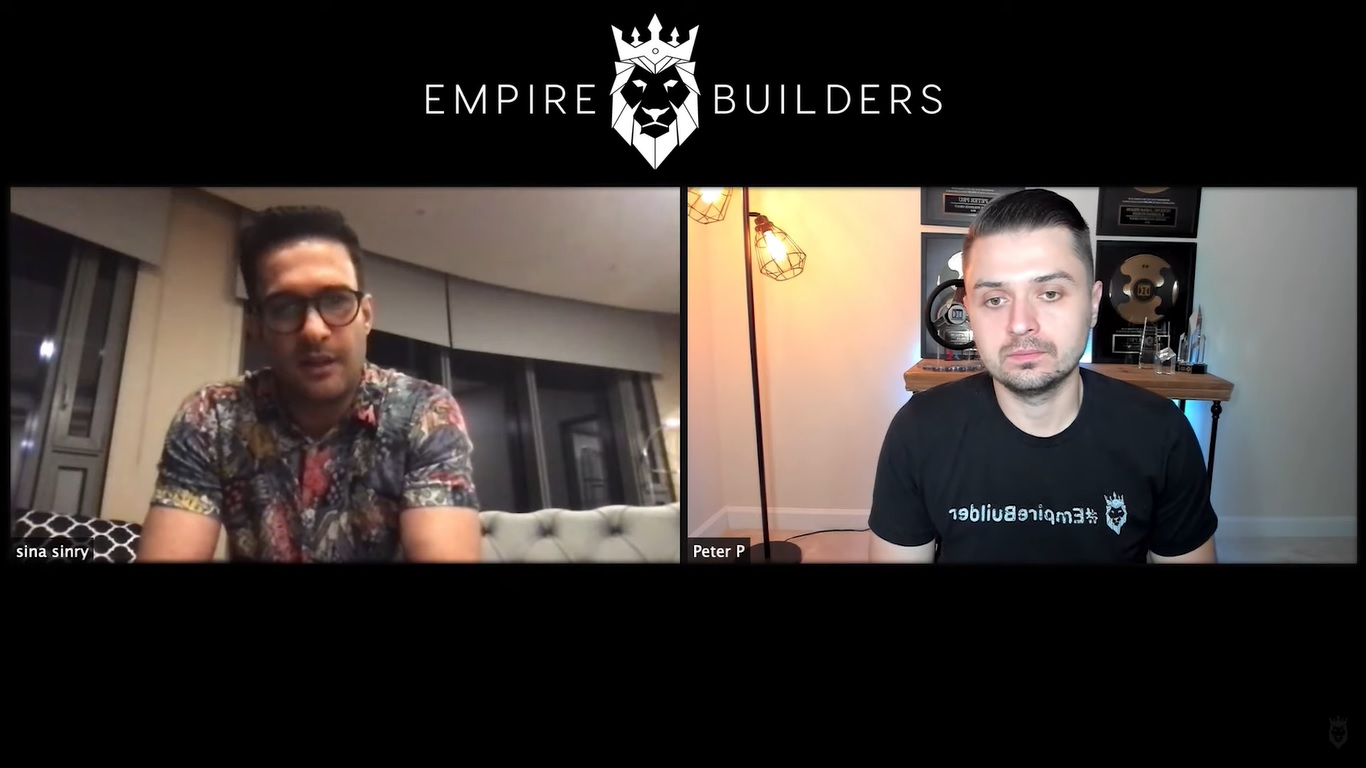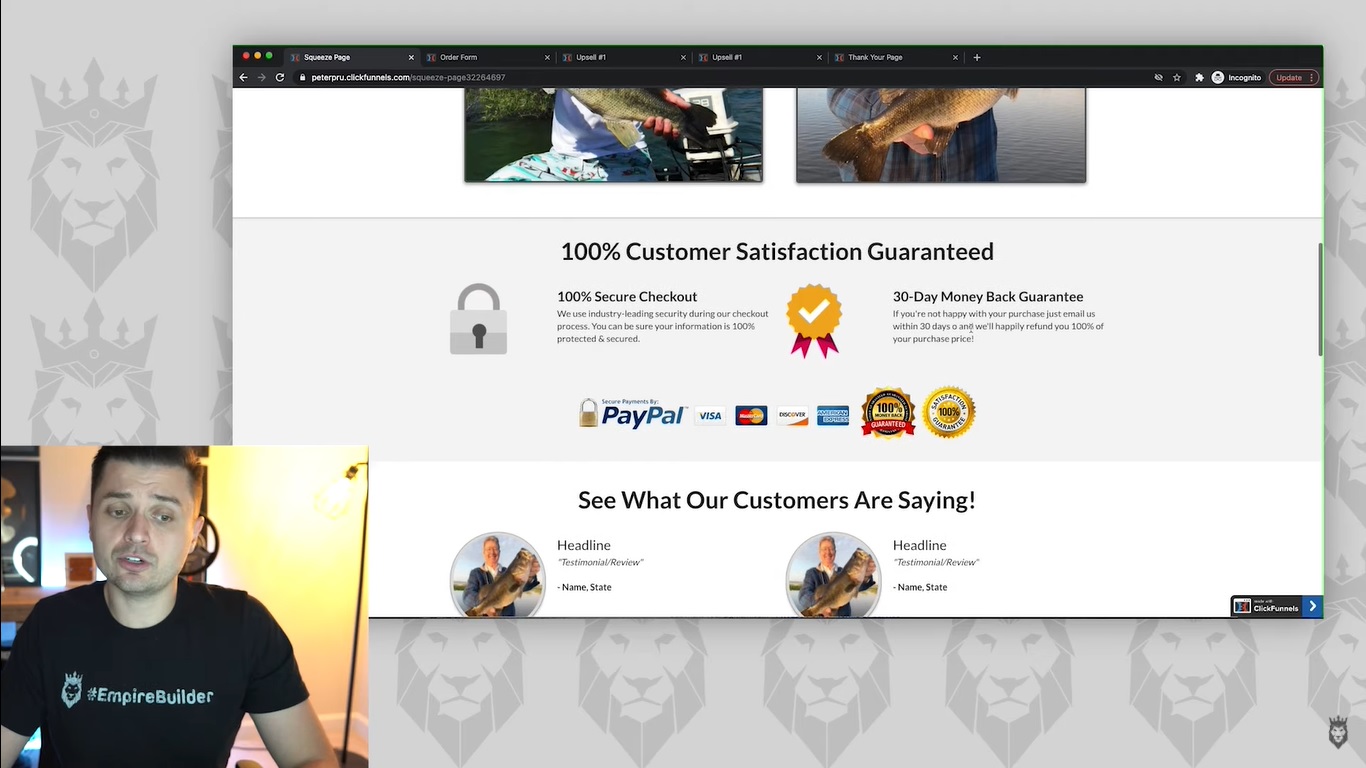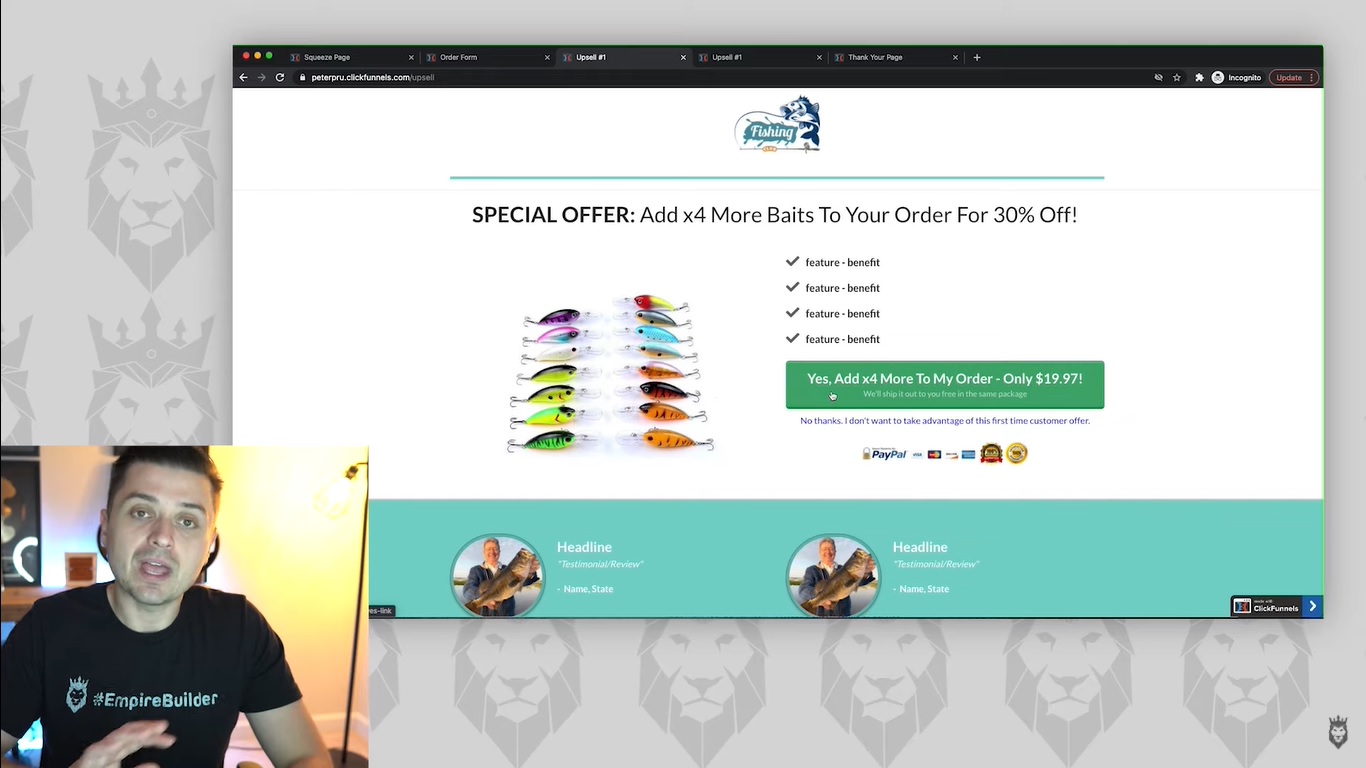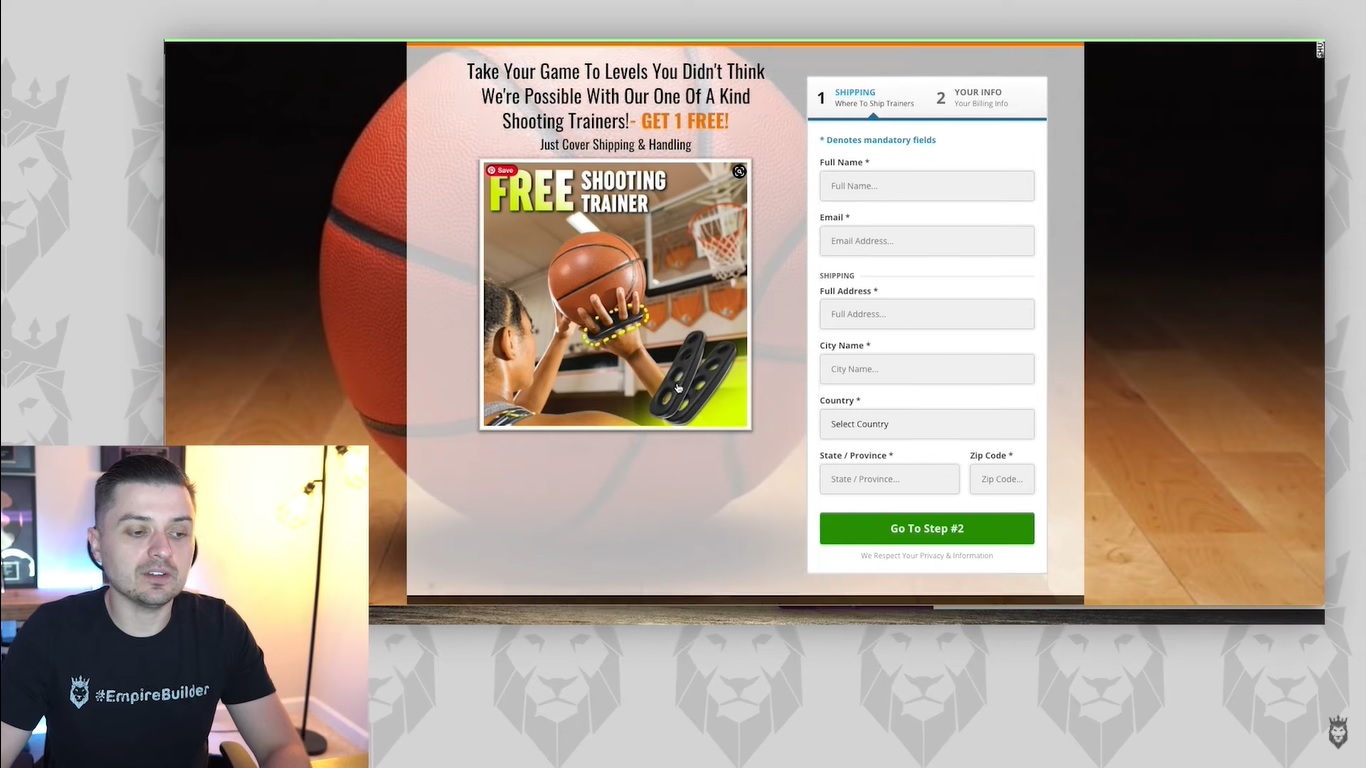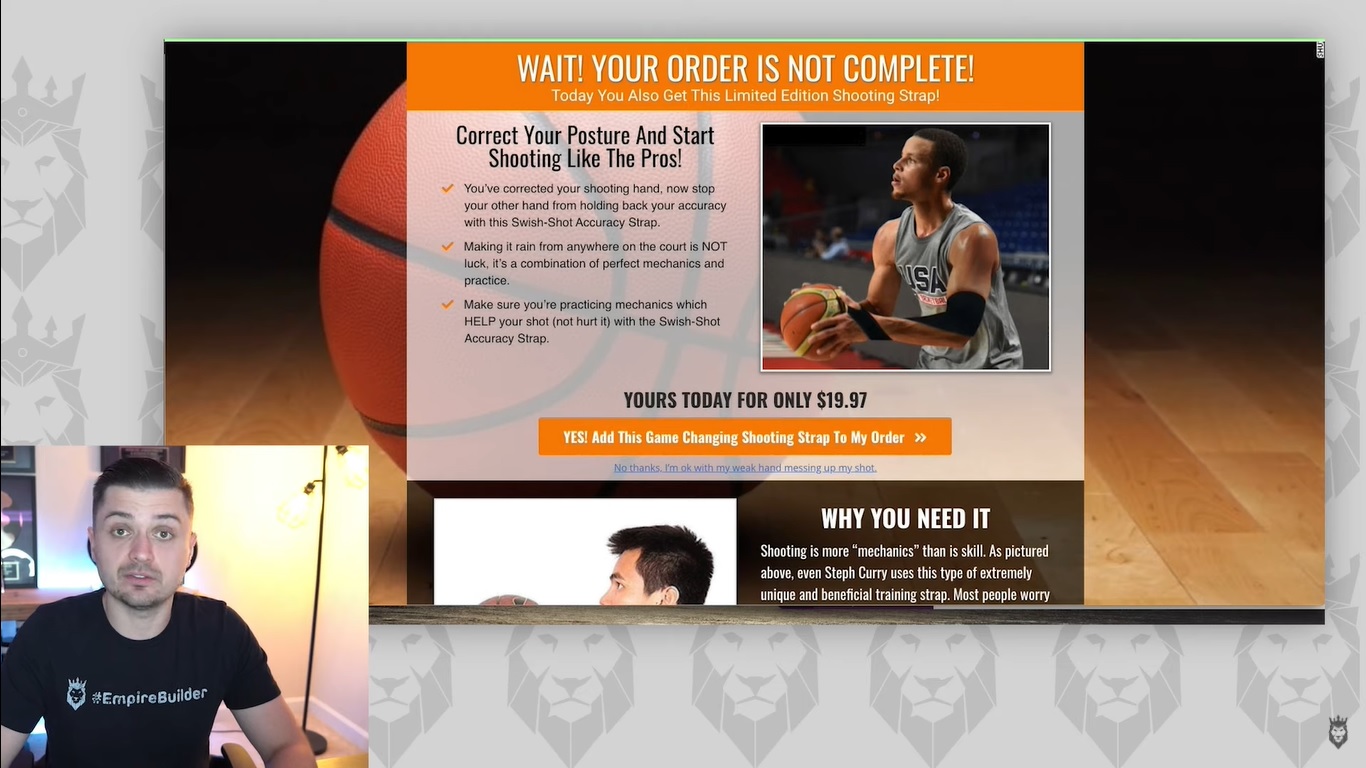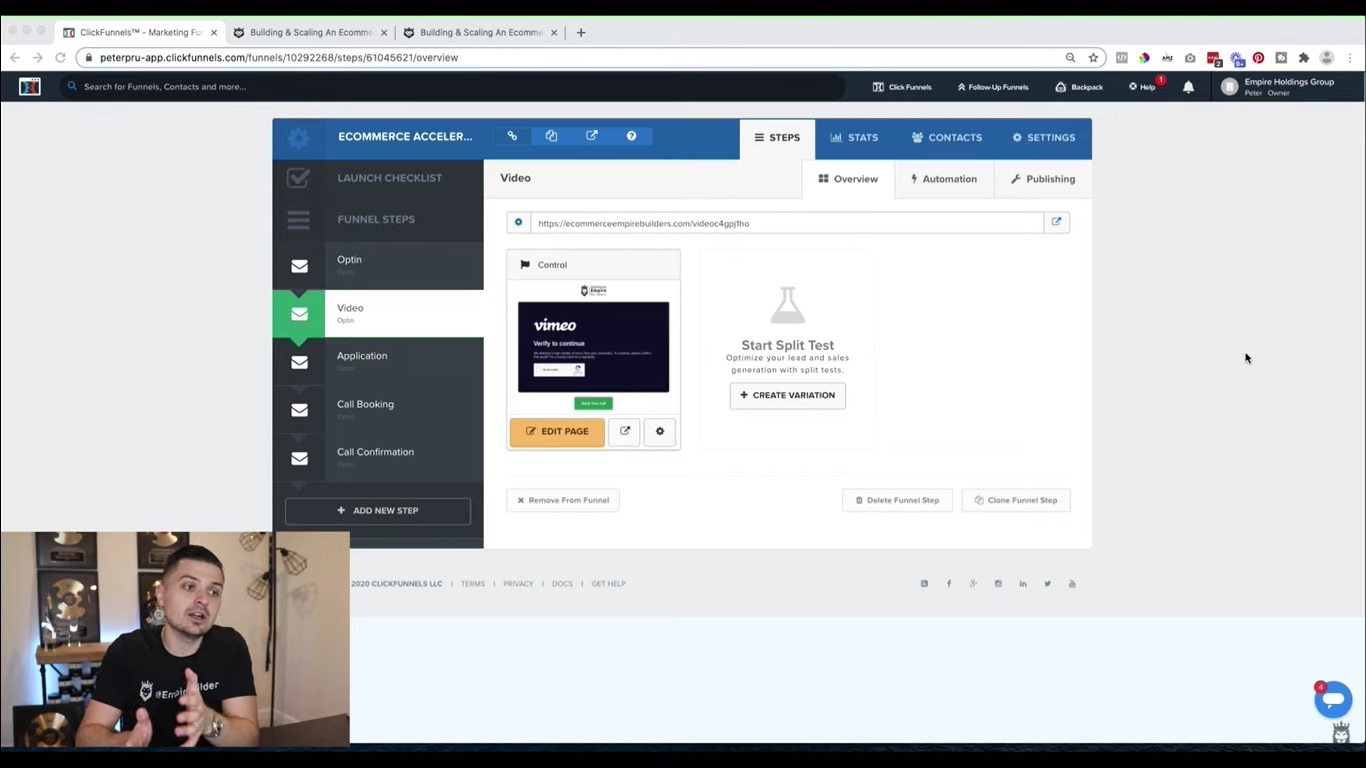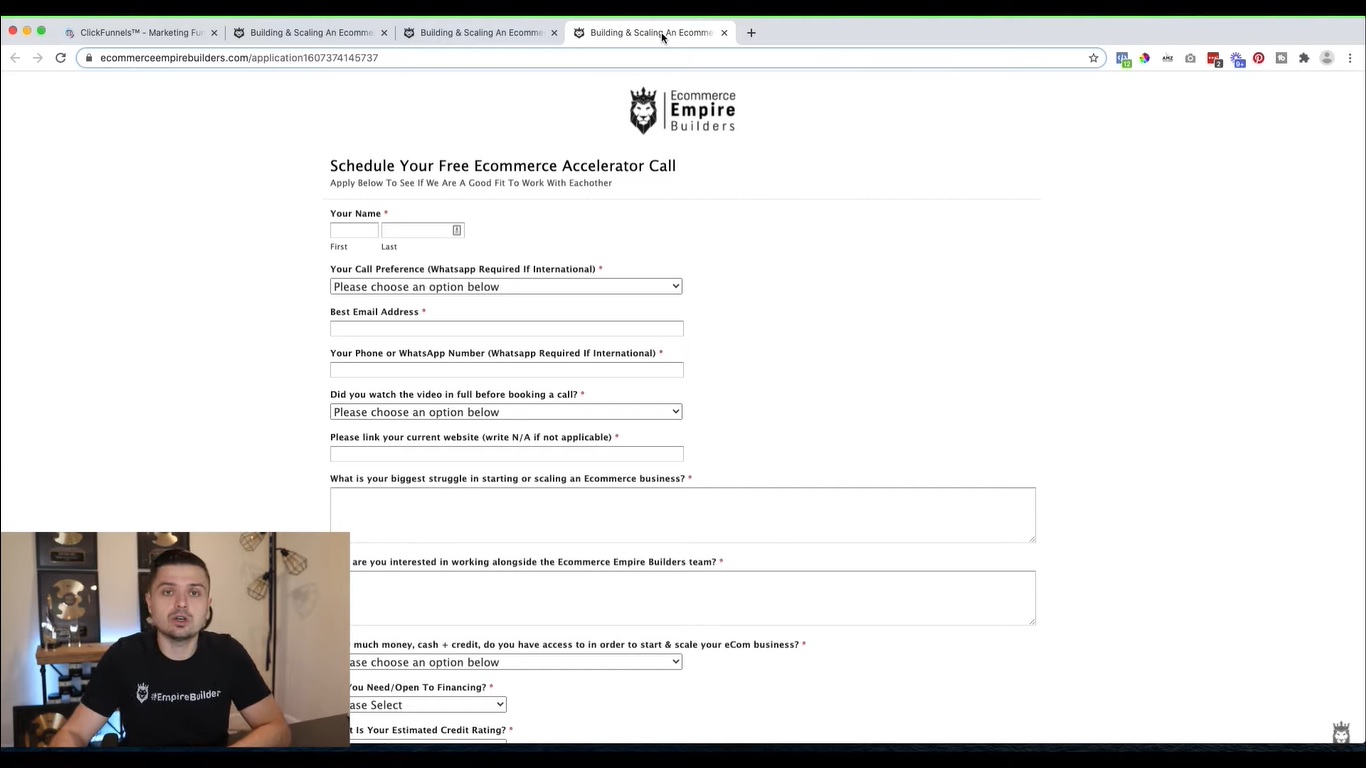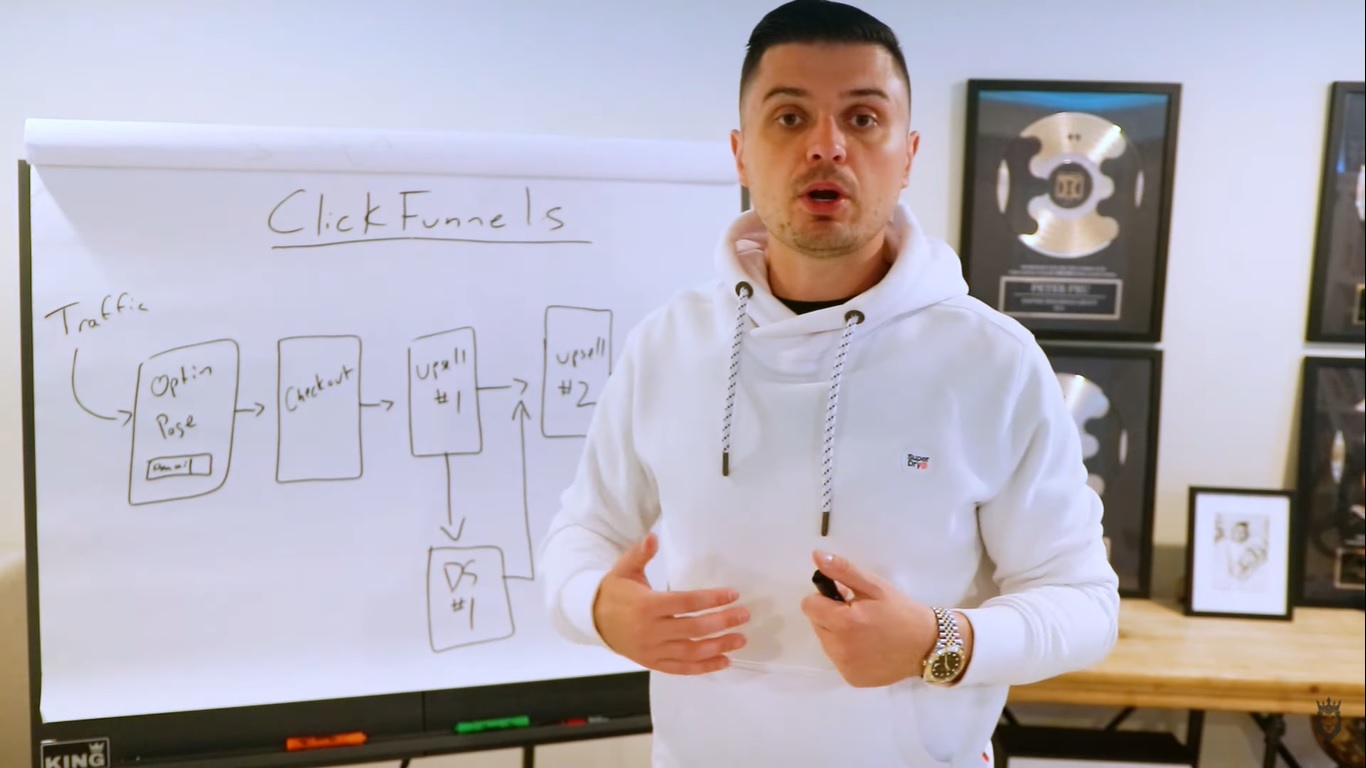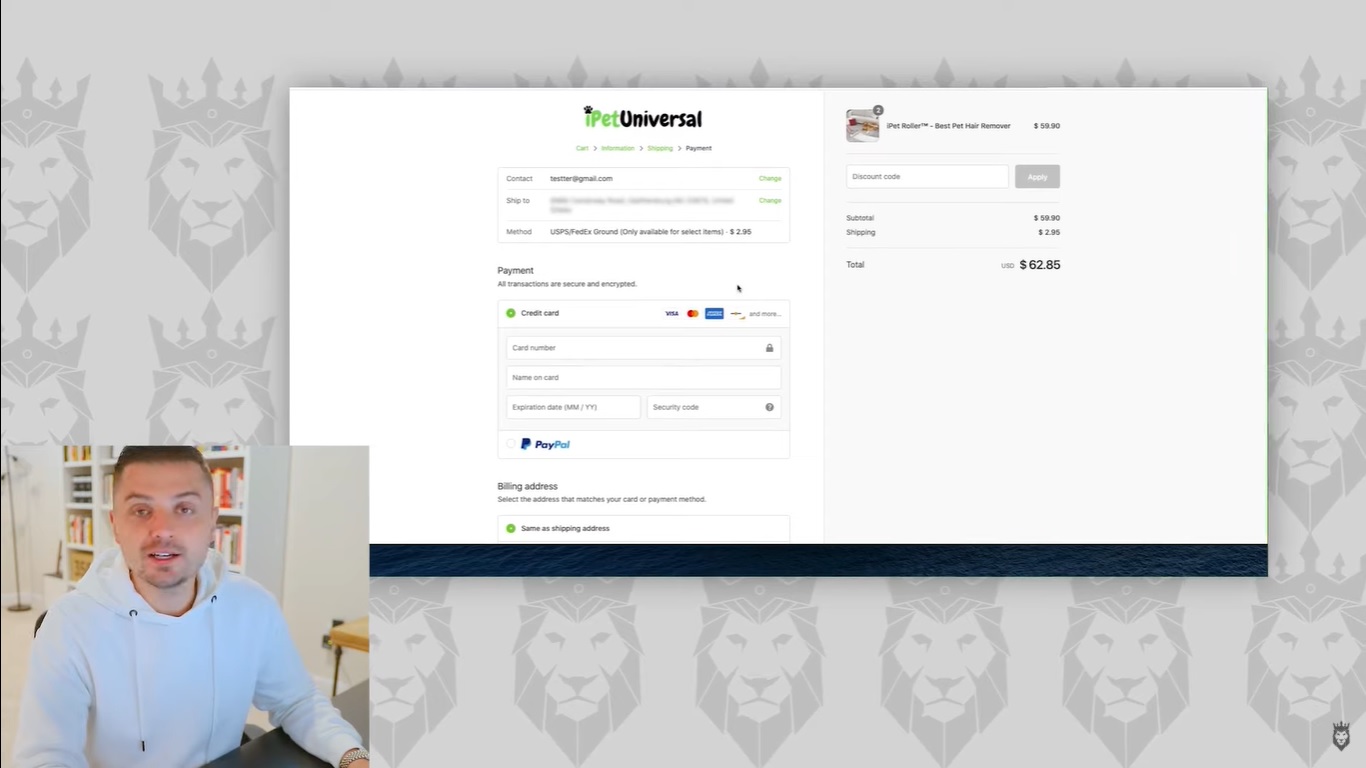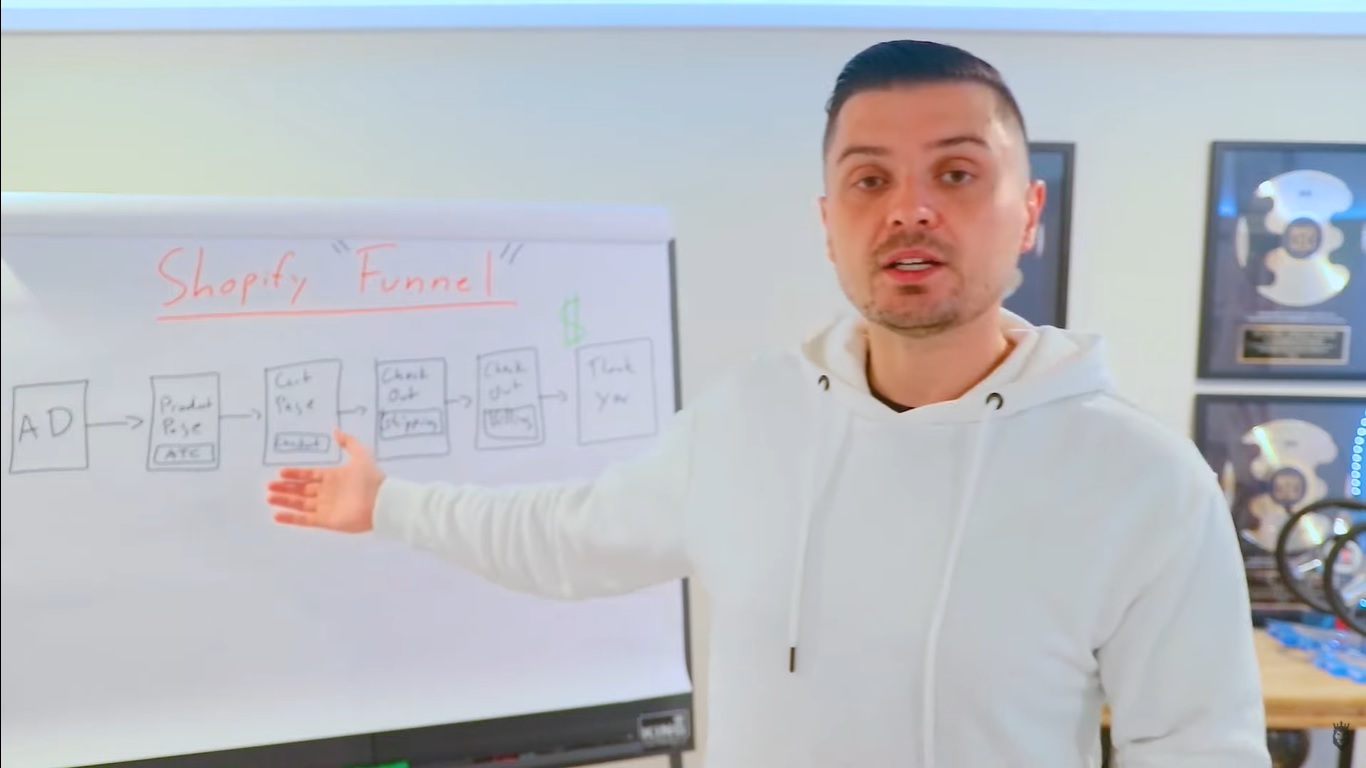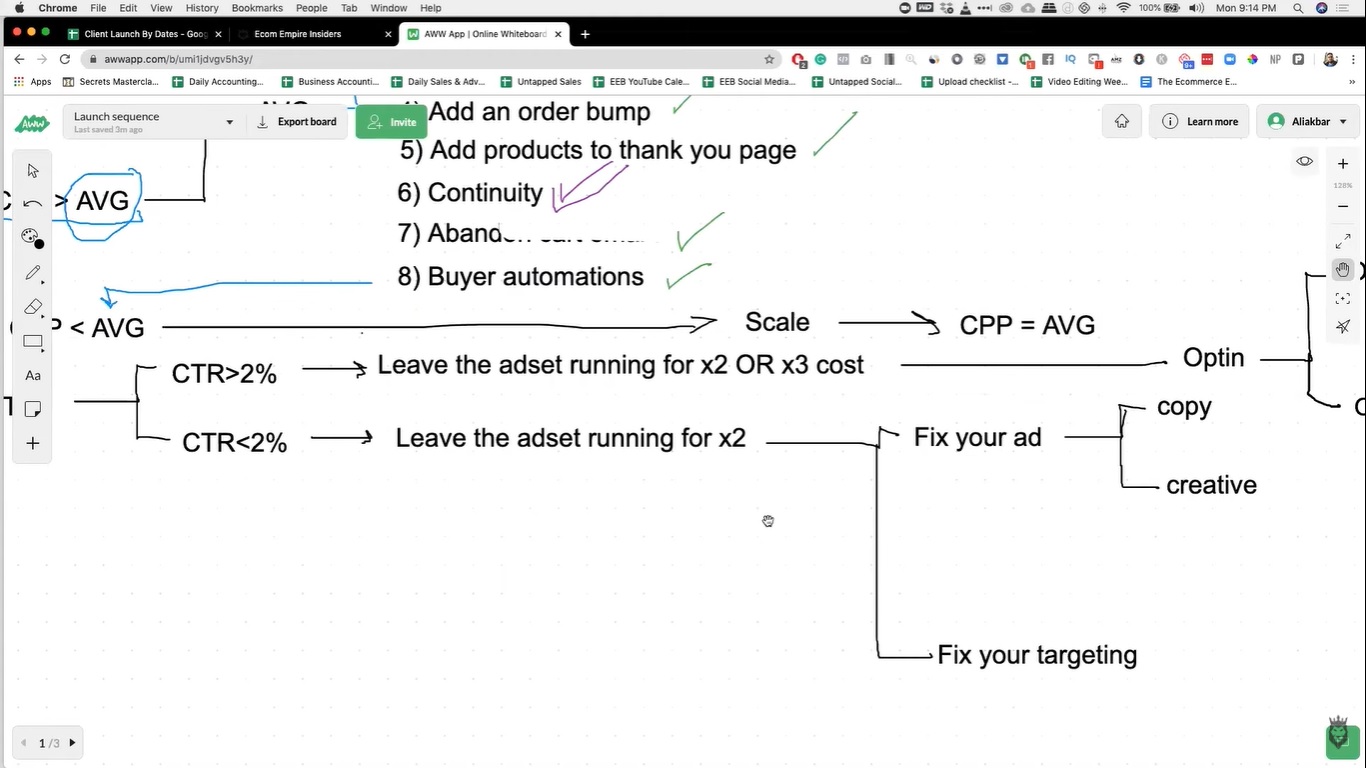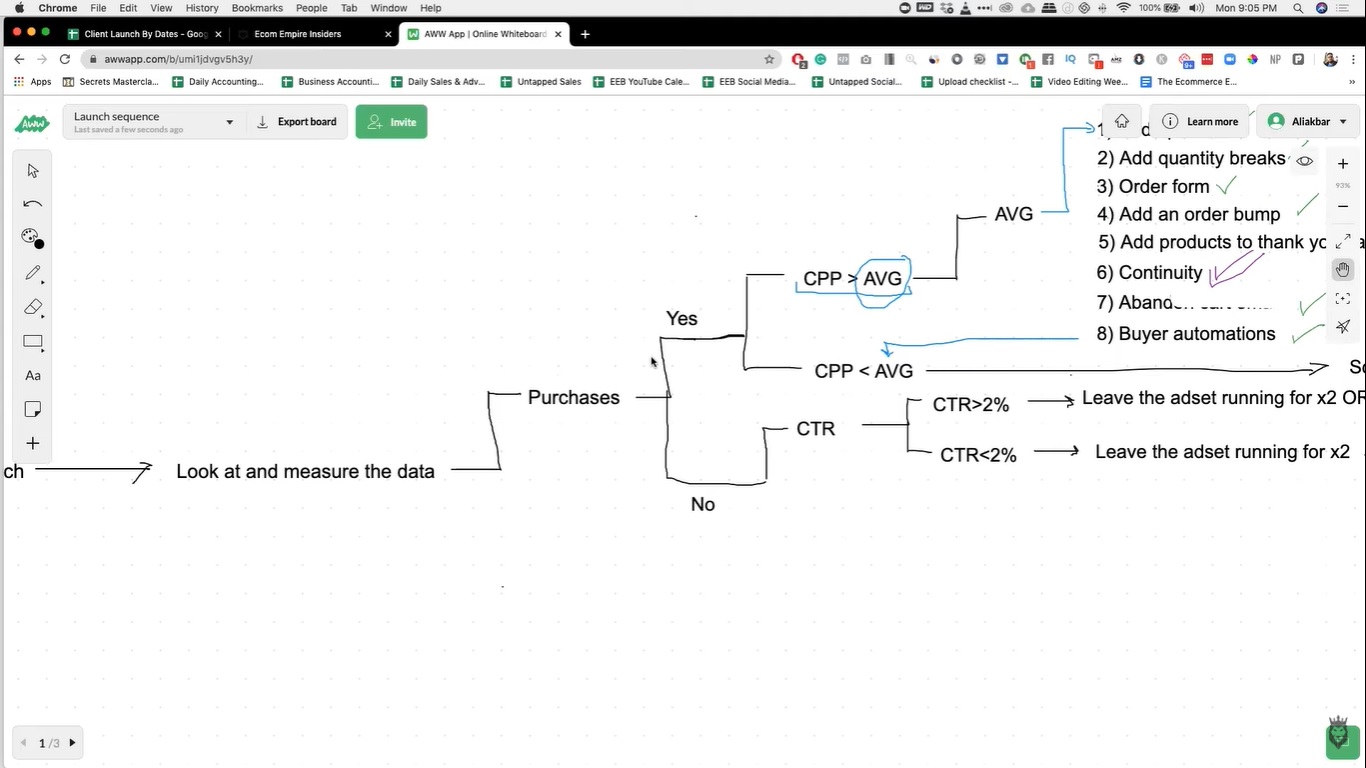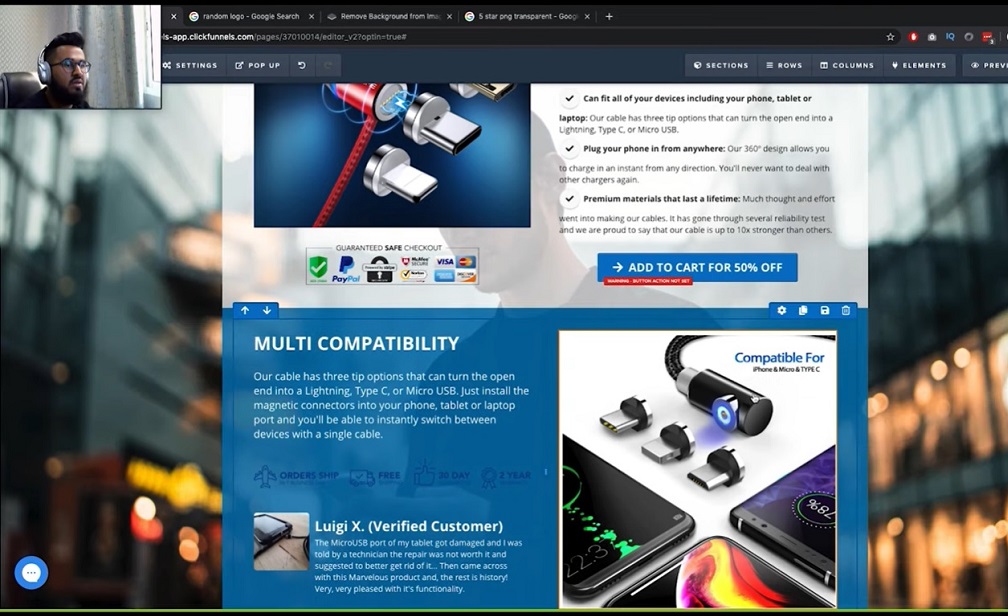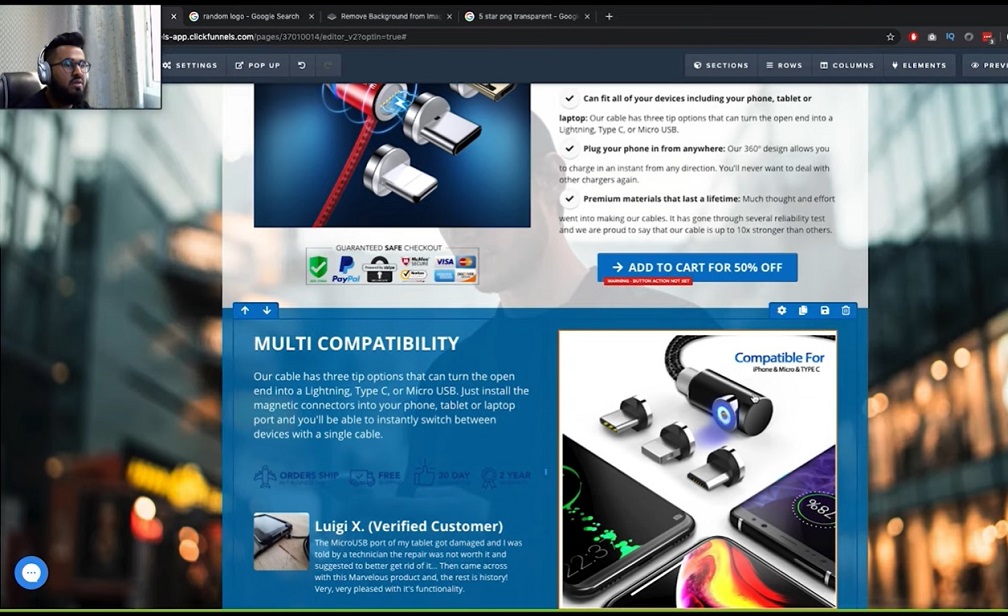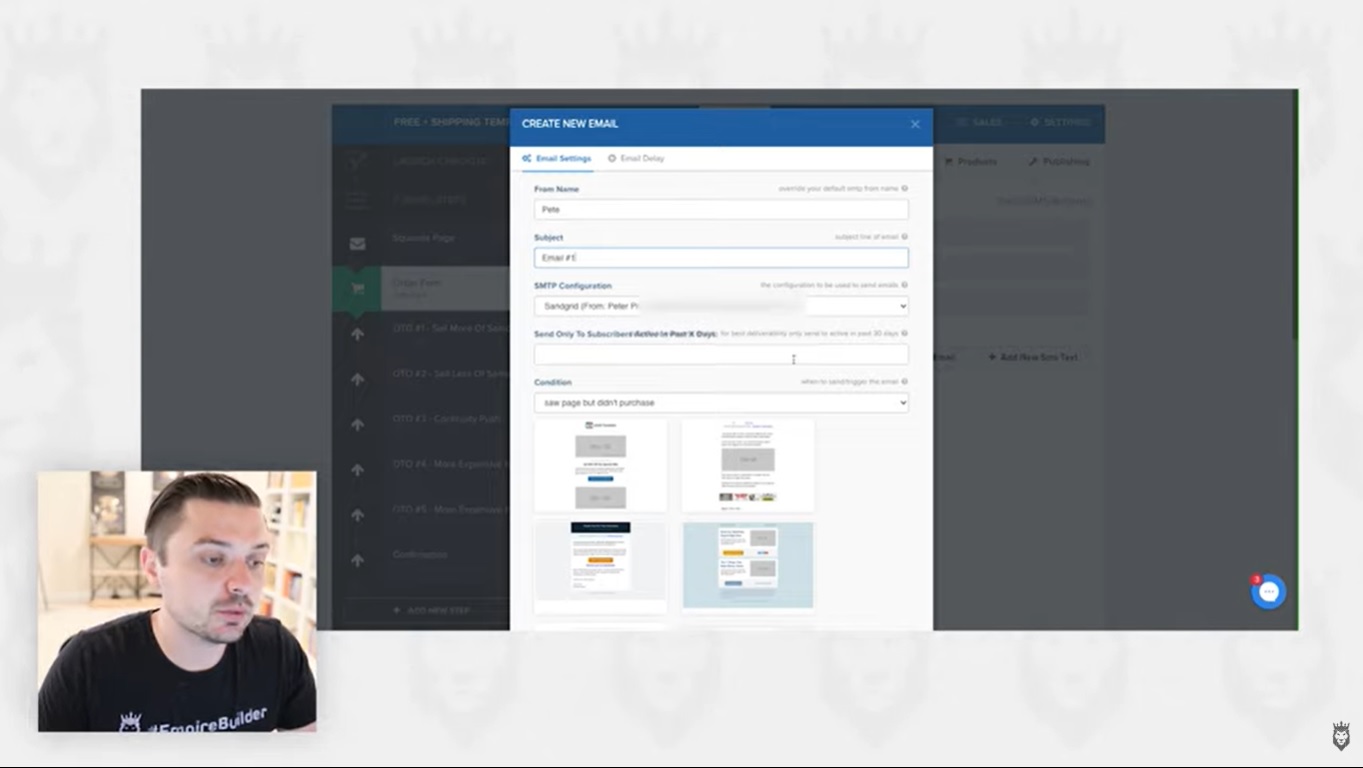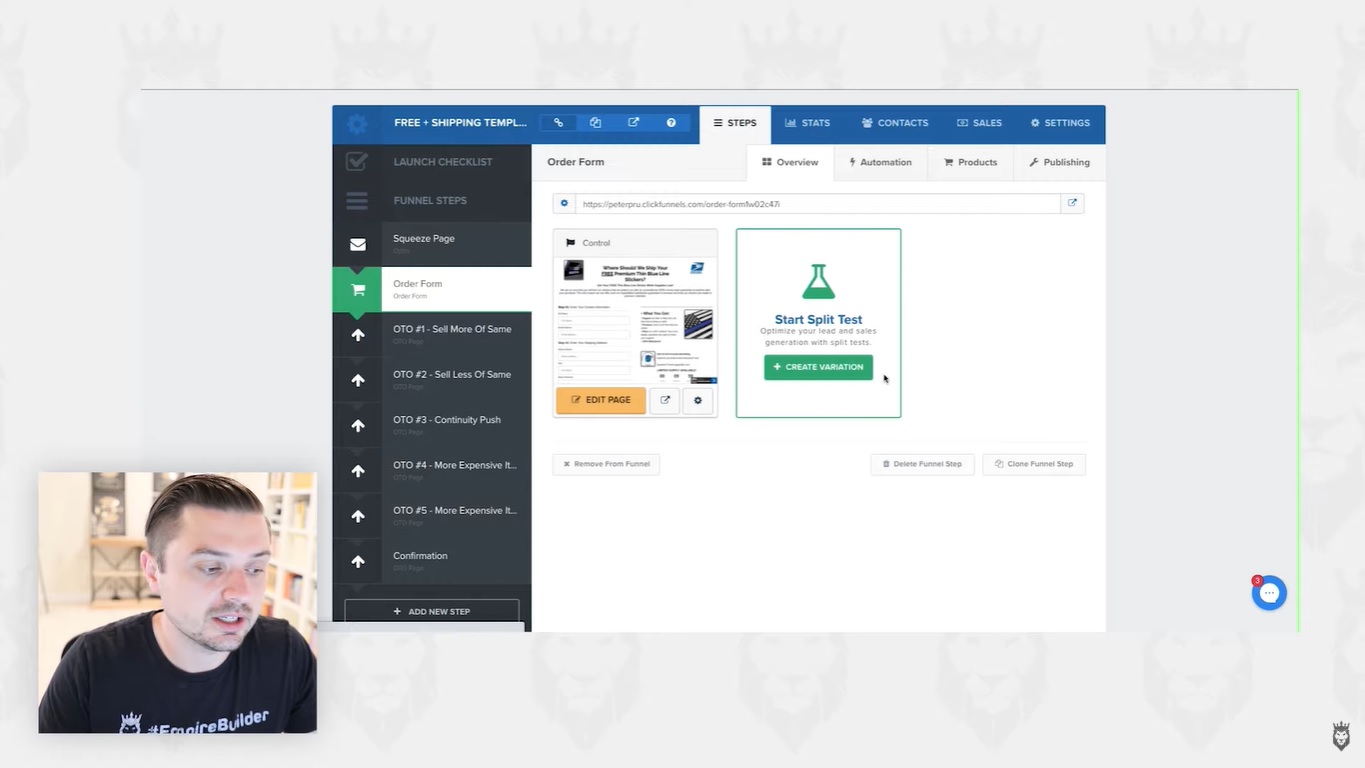We know our Empire Builders have been eager to see what’s in store for ClickFunnels 2.0, and we’re here with an overview. Unfortunately, there’s not much to see, as not a lot has changed. Despite pressure from users, ClickFunnels did not lower their pricing — which, as of December 2022, stands at:
- Basic: $147/mo
- Pro: $197/mo
- Funnel Hacker: $297/mo
What’s New in ClickFunnels 2.0?
With the exact same prices that were already pain points for most users, how does the new ClickFunnels release stack up in terms of features and usability? We’ll start with a breakdown of the ClickFunnels 2.0 membership tiers.
Basic Plan
The basic membership gives you one website with 20 funnels, one admin user, and one domain. It also comes with three “courses” (which are not ClickFunnels training resources but are instead courses for the user to host on the platform). These courses only come with 1,000 students — only enough for low-ticket items, like free promotional courses.
You also get only 10,000 contacts and “basic analytics.” The latter is a huge disappointment. The following features, at least, are unlimited:
- Workflows
- Pages
- Products
- Email sequences
All in all, it doesn’t make much sense for approximately $150 a month.
Pro Plan
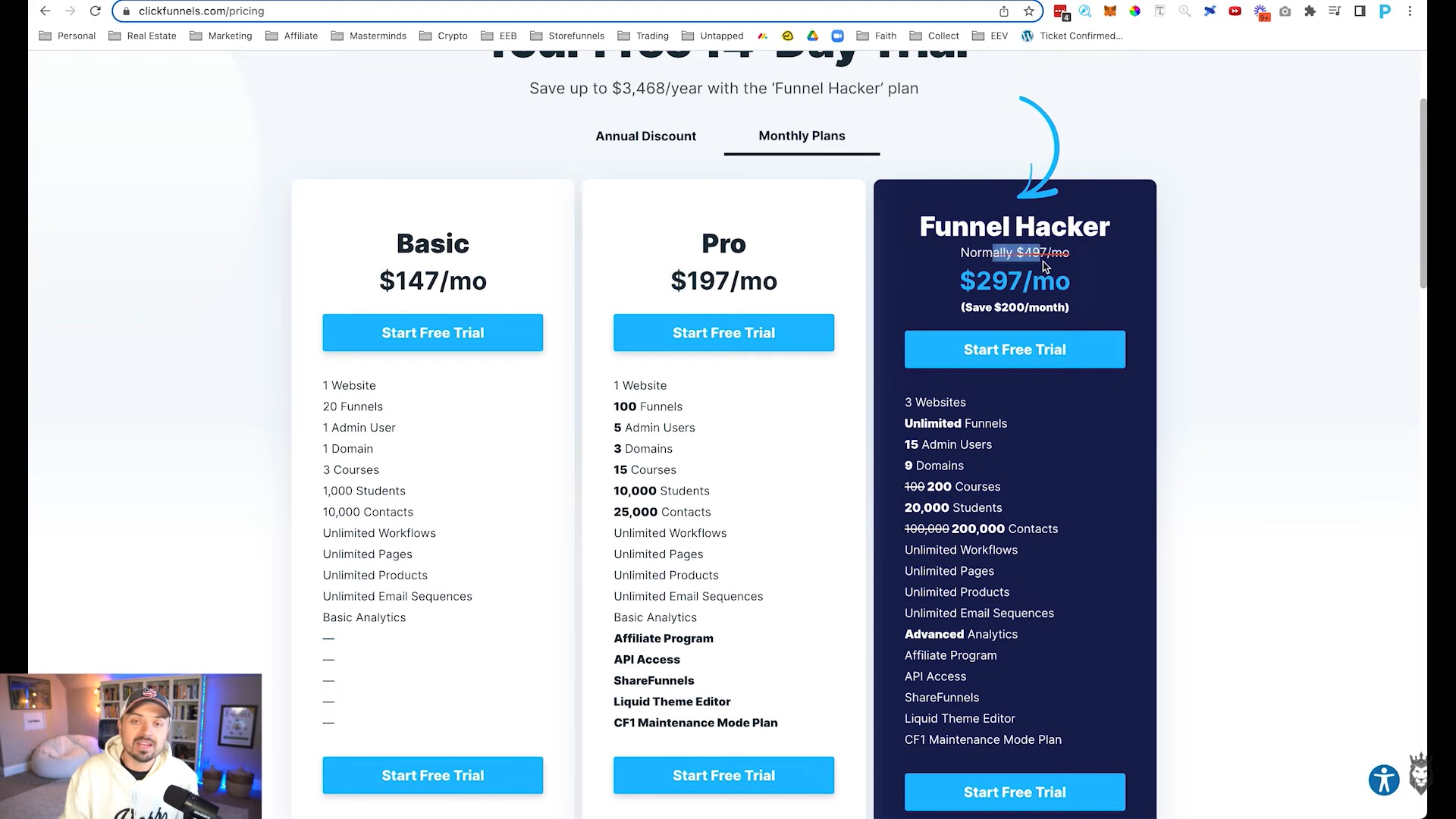
The ClickFunnels Pro plan still only gives you a single website. Funnels jump to 100, and you’re allotted five admin users, three domains, 15 courses, and 10,000 students. Contacts remain quite limited at only 20,000, and you get the same four unlimited features as in the Basic membership. The analytics for the Pro plan are also exactly the same as you get with the Basic membership!
If you wanted to help people be successful on your platform, wouldn’t you want them to have the best analytical tools? In our opinion, all ClickFunnels users need to be able to look at their funnel stats to improve decision-making and know how to tweak their funnels. Instead, good analytics are being used as a selling point.
Users should have the best analytics as they grow, which would help them learn new sales funnel strategies and ascend more naturally. You’d think ClickFunnels would want that because then their users will increasingly need more websites and funnels as their talent improves. Instead, users only get high-quality analytics after they’ve probably already mastered the skills analytics would have helped them learn faster. Holding out on high-quality analytics seems like it only hinders users’ success and growth.
New features on the Pro accounts include:
- Affiliate program
- API access
- ShareFunnels (previously only in the top-tier plan)
- Liquid theme editor
- CF1 Maintenance Mode plan
ShareFunnels
Moving ShareFunnels down a plan is a welcome change and created a bit of a buzz — but it’s not a strong selling point. While I’ve been one of the biggest supporters of ClickFunnels and one of their top affiliates for a while, I’ve also been hoping they would make some of these “top-tier” features more accessible at the lower levels. That’s where they would actually do some major good for users.
ShareFunnels drove every single affiliate sale of mine. But now, ClickFunnels is milking a little more money from their affiliates. The affiliates are being screwed over a bit because ClickFunnels knows the ShareFunnels link is the most powerful affiliate-generating feature.
Once you’ve built a beautiful funnel you’re proud of, you’ll naturally want to share it with others and use it to earn affiliate commissions. Well, that’s a privilege that requires being on the $200/month plan. Like the analytics, ShareFunnels should be all the way down on the Basic plan — which, for what it is, shouldn’t even be $150.
Hard Decisions for New Business Owners
You’d probably be better off just using sales funnels on Shopify and bundling Zipify instead. The main thing is that these are brand-new business owners, just starting an online business, and $150 is a lot for basic features. When their operations start picking up after a month or two, they’ll be locked in and require an upgrade. It’s just like Shopify, where it’s, “Start your own business! For just $30, you can change your whole life!!”
No, it’s not, and you won’t. You won’t even be able to build a functional website for that, and there are easier ways to make money without a website. These kinds of arrangements attract people who don’t know what they’re getting into yet. They don’t realize how much actually goes into running their store, how many apps they’ll need, etc. Then, it starts piling up as they become inundated with add-ons and apps (and bills) they didn’t know they required until it’s too late.
It’s the same thing with ClickFunnels. You’ll need at least the $197 or $297 plan, and it’s most likely the latter because you need the analytics; looking at your stats to make better-informed decisions is the most important part of eCommerce. Shopify also becomes way more expensive once you’re already involved, at which point you’ll need tons of other apps to build a functioning, profitable website.
It just seems crazy to keep such fundamental things out of reach while using basic, fundamental features as selling points.
Funnel Hacker Plan
For $300, ClickFunnels gives you three websites and unlimited funnels. You also get 15 admin users (why are admin users included in offer stacks, anyway?), nine domains (which seems random), and marginal increases elsewhere. While you do get 200 courses, that only come with a capacity of 20,000 students — which is absolutely nothing. People just coming into this don’t realize 20,000 students is hardly anything, especially when using a funnel to sell higher-priced items.
Finally, they give you their advanced analytics. The Funnel Hacker plan also comes with the same Pro account features listed above, and…. that’s it! That’s all they’re going with.
Out of all my connections in this community, the people I’ve seen promoting this are only pushing their affiliate links. I don’t think they’re actually using ClickFunnels 2.0, but who knows?
Lastly, you get a bit of a discount if you make an annual payment.
Community Feedback
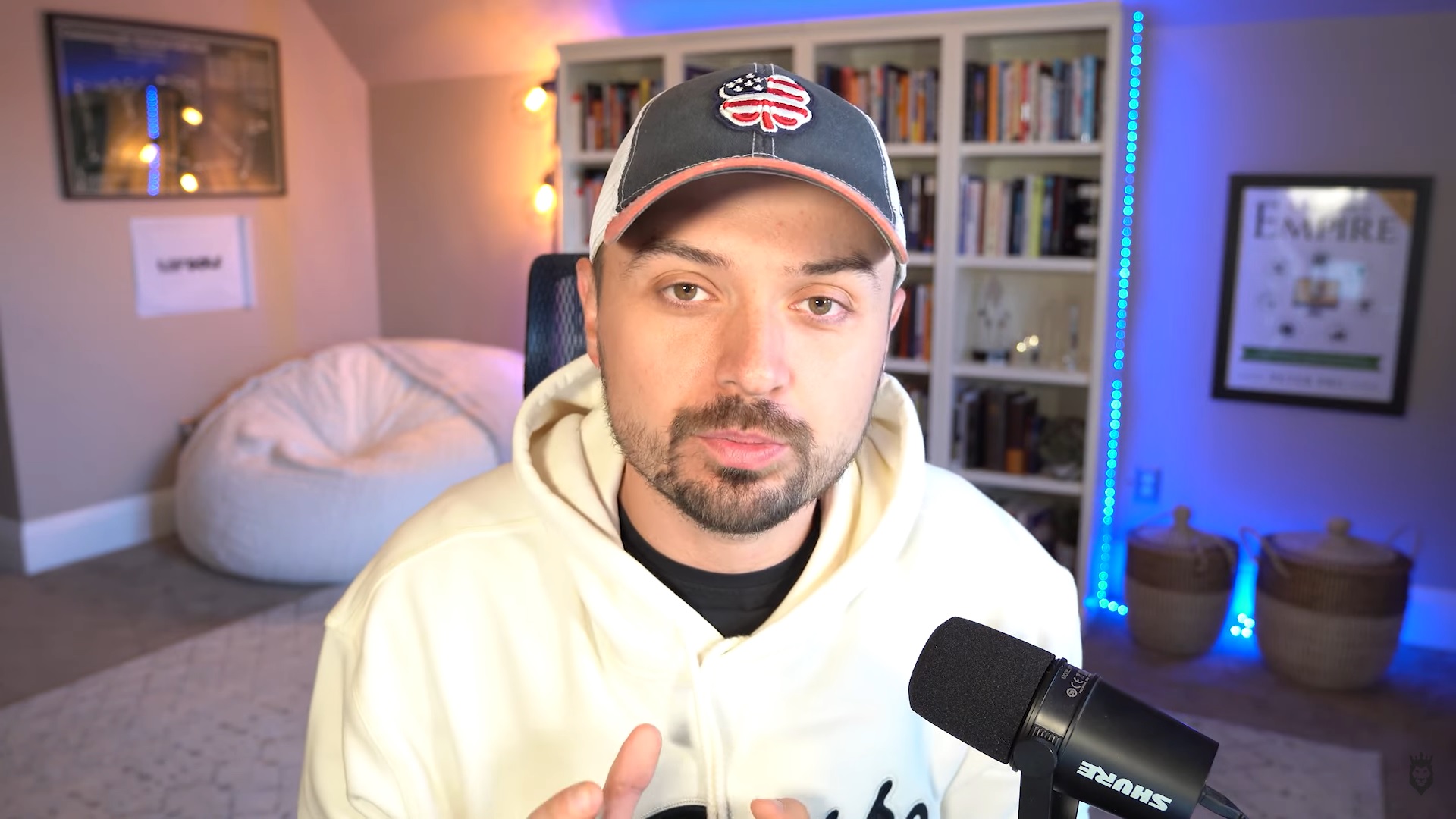
There were some insightful comments about ClickFunnels 2.0, including speculation that ClickFunnels is trying to increase valuation and sell to private equity. We thought that at first, too. But now, I think they just want fewer customers at a higher price point. But I don’t see why people would get into ClickFunnels right now.
Besides the whole “culture” behind it, there really isn’t a reason to join ClickFunnels 2.0 — and if ClickFunnels took their product to Silicon Valley investors, they would absolutely be laughed at. It’s just not good compared to Shopify or almost any other online sales platform. They spend so much time selling courses, coaching, “masterminds,” and all this other stuff… Why don’t they just spend that time building better software?
That said, I’m still a huge supporter of ClickFunnels 1.0. Many people have been using ClickFunnels 1.0 and will keep using it. I’ll probably never cancel my ClickFunnels account because it has so many memories for me, and we’ve created tons of ClickFunnels training and templates (including a template specific to high-ticket products). I think a lot of people are going to stay on ClickFunnels 1.0 rather than upgrade.
With software such a commodity now, you have to compete on price, and people are still very upset about ClickFunnels 2.0 prices. It feels like they’re doing nothing in the interest of helping newcomers sell more easily, especially with so many new online sellers just starting out.
Naturally, people are asking what better alternatives exist. Personally, we like StoreFunnels.net. For $69/month, you can build stores and funnels. Also, they support email marketing fully in-platform. We get a lot of support from Store Funnels users.
Final Thoughts on ClickFunnels 2.0

Unfortunately, there’s just not much to say about ClickFunnels 2.0. Having seen great things from them in the past, we wish there was much more to look forward to, but that’s our assessment. We want to know what you think about ClickFunnels 2.0. Are you sticking with ClickFunnels 1.0, or are you going to use the new version? Reply down below, and let us know your thoughts, as well as opinions about any alternative funnel platforms.
This is an open forum for us to have good discussions that support each other and improve our online selling strategies. Be sure to check out our exclusive funnel-building webinar, which you can access today, and you’ll also receive our free $100,000/month funnel template. You can also check out our YouTube channel for more tips. We’ll see you soon with more sales funnel and online wealth-creation tips — and until next time, remember: your empire starts now!
